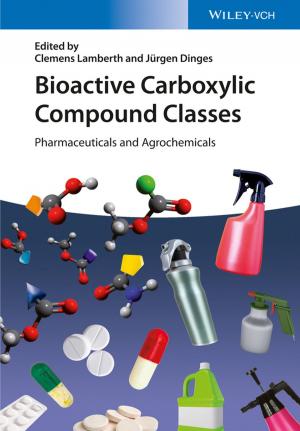Nonclinical Safety Assessment
A Guide to International Pharmaceutical Regulations
Nonfiction, Health & Well Being, Medical, Medical Science, Pharmacology| Author: | ISBN: | 9781118516980 | |
| Publisher: | Wiley | Publication: | March 5, 2013 |
| Imprint: | Wiley | Language: | English |
| Author: | |
| ISBN: | 9781118516980 |
| Publisher: | Wiley |
| Publication: | March 5, 2013 |
| Imprint: | Wiley |
| Language: | English |
Bringing a new drug to market is a costly time-consuming process. Increased regional and international regulation over the last twenty years, while necessary, has only served to amplify these costs. In response to this escalation, developmental strategies have shifted towards a more global approach. In order to create the most cost-effective and safe processes, it is critical for those bringing drugs to market to understand both the globally accepted regulations and the local variations. Nonclinical Safety Assessment: A Guide to International Pharmaceutical Regulations provides a practical description of nonclinical drug development regulations and requirements in the major market regions.
It includes:
- ICH – the International Conference on Harmonisation of Technical Requirements for Registration of Pharmaceuticals for Human Use
- National regulations, including US FDA, Canada, Mercosur and Brazil, South Africa, China, Japan, India and Australia
- Repeated dose toxicity studies
- Carcinogenicity; Genotoxicity; Developmental and reproductive toxicology; Immunotoxicology
- Biotechnology-derived pharmaceuticals
- Vaccine development
- Phototoxicity and photocarcinogenicity
- Degradants, impurities, excipients and metabolites
Primarily intended for those professionals actively involved in the nonclinical and clinical development of a pharmaceutical product, including toxicologists, pharmacologists, clinicians and project managers, this book provides a roadmap for successful new drug approval and marketing*.*
Bringing a new drug to market is a costly time-consuming process. Increased regional and international regulation over the last twenty years, while necessary, has only served to amplify these costs. In response to this escalation, developmental strategies have shifted towards a more global approach. In order to create the most cost-effective and safe processes, it is critical for those bringing drugs to market to understand both the globally accepted regulations and the local variations. Nonclinical Safety Assessment: A Guide to International Pharmaceutical Regulations provides a practical description of nonclinical drug development regulations and requirements in the major market regions.
It includes:
- ICH – the International Conference on Harmonisation of Technical Requirements for Registration of Pharmaceuticals for Human Use
- National regulations, including US FDA, Canada, Mercosur and Brazil, South Africa, China, Japan, India and Australia
- Repeated dose toxicity studies
- Carcinogenicity; Genotoxicity; Developmental and reproductive toxicology; Immunotoxicology
- Biotechnology-derived pharmaceuticals
- Vaccine development
- Phototoxicity and photocarcinogenicity
- Degradants, impurities, excipients and metabolites
Primarily intended for those professionals actively involved in the nonclinical and clinical development of a pharmaceutical product, including toxicologists, pharmacologists, clinicians and project managers, this book provides a roadmap for successful new drug approval and marketing*.*















